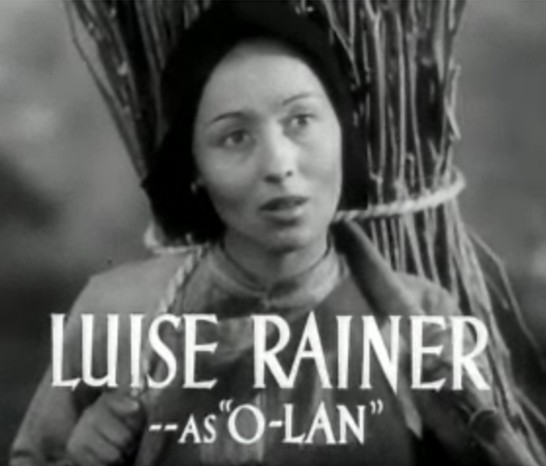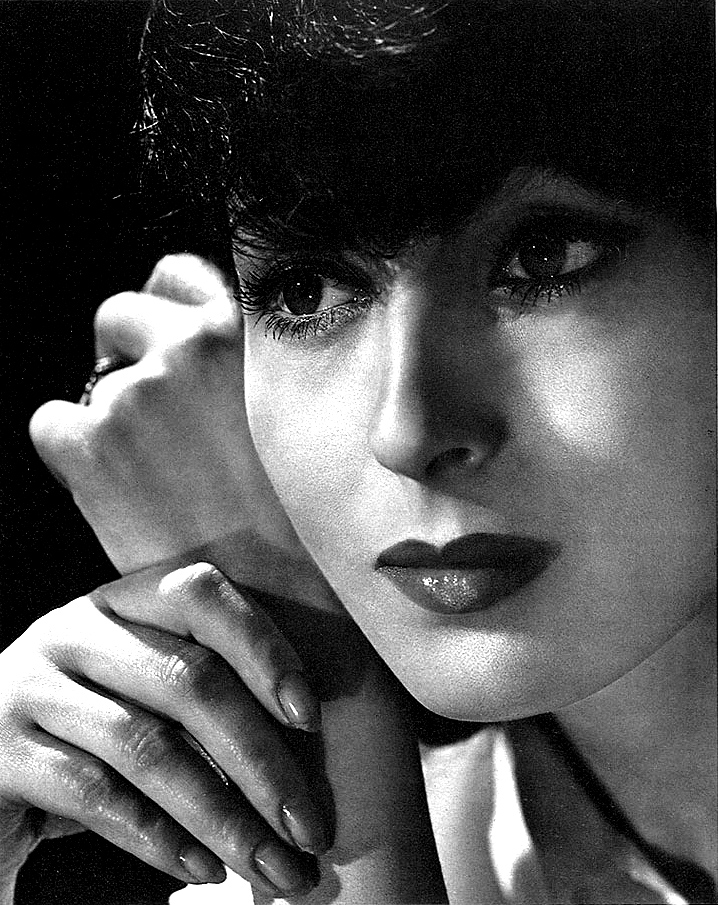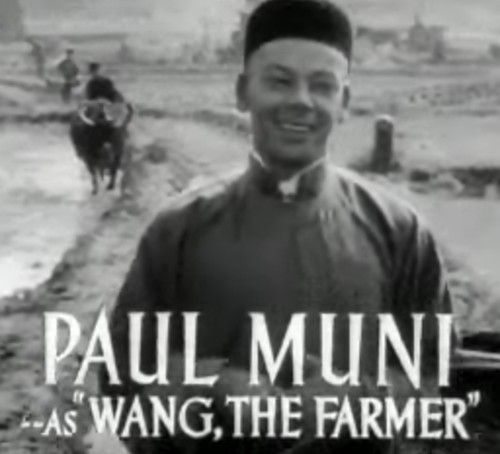|
Anna May Wong
Wong Liu Tsong (January 3, 1905 – February 3, 1961), known professionally as Anna May Wong, was an American actress, considered the first Chinese-American movie star in Hollywood, as well as the first Chinese-American actress to gain international recognition. Her varied career spanned silent film, sound film, television, stage, and radio. As one of the first women depicted on the reverse of the quarter in the 2022–2025 American Women quarters series, she is also the first Asian American to appear on a U.S. coin. Born in Los Angeles to second-generation Taishanese Chinese-American parents, Wong became infatuated with films and began acting in films at an early age. During the silent film era, she acted in ''The Toll of the Sea'' (1922), one of the first films made in color, and in Douglas Fairbanks' '' The Thief of Bagdad'' (1924). Wong became a fashion icon and had achieved international stardom in 1924. Wong had been one of the first to embrace the flapper look. In 1934 ... [...More Info...] [...Related Items...] OR: [Wikipedia] [Google] [Baidu] |
Wong (surname)
Wong is the Jyutping, Yale and Hong Kong romanization of the Chinese surnames Huang () and Wang (), two ubiquitous Chinese surnames; Wang (), another common Chinese surname; and a host of other rare Chinese surnames, including Heng (), Hong (), Hong (), and Hong () Note that, while 汪 (Wang/Wung) could be distinguished by its tone, 黃 (Wong/Huang) and 王 (Wong/Wang) are homophones in Cantonese. To differentiate the two in conversation, 黃 (Wong/Huang) is customarily referred to by native Cantonese speakers as 黃河嘅黃 (Yellow River Wong), 黃金嘅黃 (yellow gold Wong), 大肚黃 (big belly Wong, as the character resembles a person with a big belly), or by native Mandarin speakers as "grass-head Wong" (due to its first radical), whereas 王 (Wong/Wang) is referred as the 三劃王 "three-stroke Wong" (due to its prominent 3 horizontal strokes) or the 'King' Wong (due to its meaning). Distribution In Taiwan, names are written using Chinese characters and are current ... [...More Info...] [...Related Items...] OR: [Wikipedia] [Google] [Baidu] |
Classical Hollywood Cinema
Classical Hollywood cinema is a term used in film criticism to describe both a narrative and visual style of filmmaking which became characteristic of American cinema between the 1910s (rapidly after World War I) and the 1960s. It eventually became the most powerful and pervasive style of filmmaking worldwide. Similar or associated terms include classical Hollywood narrative, the Golden Age of Hollywood, Old Hollywood, and classical continuity. For centuries, the only visual standard of narrative storytelling art was the theatre. Since the first narrative films in the mid-late 1890s, filmmakers have sought to capture the power of live theatre on the cinema screen. Most of these filmmakers started as directors on the late 19th-century stage, and likewise most film actors had roots in vaudeville (e.g. The Marx Brothers) or theatrical melodramas. Visually, early narrative films had adapted little from the stage, and their narratives had adapted very little from vaudeville and mel ... [...More Info...] [...Related Items...] OR: [Wikipedia] [Google] [Baidu] |
Portrayal Of East Asians In American Film And Theater
Portrayals of East Asians in American film and theatre has been a subject of controversy. These portrayals have frequently reflected an ethnocentric perception of East Asians rather than realistic and authentic depictions of East Asian cultures, colors, customs, and behaviors. Yellowface, a form of theatrical makeup used by European-American performers to represent an East Asian person (similar to the practice of blackface used to represent African-American characters), continues to be used in film and theater. In the 21st century alone, ''Grindhouse'' (in a trailer parody of the Fu Manchu serials), ''Balls of Fury'', ''I Now Pronounce You Chuck and Larry'', '' Crank: High Voltage'', and ''Cloud Atlas'' all feature yellowface or non-East Asian actors as East Asian caricatures. Early East Asian American film actors Sessue Hayakawa The Japanese actor Sessue Hayakawa began appearing in films around 1914. [...More Info...] [...Related Items...] OR: [Wikipedia] [Google] [Baidu] |
Luise Rainer
Luise Rainer ( , ; 12 January 1910 – 30 December 2014) was a German-American-British film actress. She was the first thespian to win multiple Academy Awards and the first to win back-to-back; at the time of her death, thirteen days shy of her 105th birthday, she was the longest-lived Oscar recipient, a superlative that has not been exceeded as of . Rainer started her acting career in Germany at age 16, under the tutelage of Austria's leading stage director, Max Reinhardt. Within a few years, she had become a distinguished Berlin stage actress with Reinhardt's Vienna theater ensemble. Critics highly praised the quality of her acting. After years of acting on stage and in films in Austria and Germany, she was discovered by Metro-Goldwyn-Mayer talent scouts, who signed her to a three-year contract in Hollywood in 1935. A number of filmmakers predicted she might become another Greta Garbo, MGM's leading female star at the time. Her first American film role was in '' Escapade'' in ... [...More Info...] [...Related Items...] OR: [Wikipedia] [Google] [Baidu] |
The Good Earth (film)
''The Good Earth'' is a 1937 American drama film about Chinese farmers who struggle to survive. It was adapted by Talbot Jennings, Tess Slesinger, and Claudine West from the 1932 play by Owen Davis and Donald Davis, which was in itself based on the 1931 novel of the same name by Nobel Prize-winning author Pearl S. Buck. The film was directed by Sidney Franklin, with uncredited contributions by Victor Fleming and Gustav Machaty. The film stars Paul Muni as Wang Lung. For her role as his wife O-Lan, Luise Rainer won an Academy Award for Best Actress. The film also won the Academy Award for Best Cinematography for Karl Freund. It was nominated for Best Director, Best Film Editing, and Best Picture. Its world premiere was at the elegant Carthay Circle Theatre in Los Angeles. Plot In pre-World War I northern China, young farmer Wang Lung ( Paul Muni) marries O-Lan (Luise Rainer), a slave at the Great House, the residence of the most powerful family in their village. O-Lan pr ... [...More Info...] [...Related Items...] OR: [Wikipedia] [Google] [Baidu] |
Pearl S
A pearl is a hard, glistening object produced within the soft tissue (specifically the mantle) of a living shelled mollusk or another animal, such as fossil conulariids. Just like the shell of a mollusk, a pearl is composed of calcium carbonate (mainly aragonite or a mixture of aragonite and calcite) in minute crystalline form, which has deposited in concentric layers. The ideal pearl is perfectly round and smooth, but many other shapes, known as baroque pearls, can occur. The finest quality of natural pearls have been highly valued as gemstones and objects of beauty for many centuries. Because of this, ''pearl'' has become a metaphor for something rare, fine, admirable and valuable. The most valuable pearls occur spontaneously in the wild, but are extremely rare. These wild pearls are referred to as ''natural'' pearls. ''Cultured'' or ''farmed'' pearls from pearl oysters and freshwater mussels make up the majority of those currently sold. Imitation pearls are also widely s ... [...More Info...] [...Related Items...] OR: [Wikipedia] [Google] [Baidu] |
O-Lan
O-Lan is a fictional character in Pearl S. Buck's 1931 novel ''The Good Earth''. For her portrayal of the character in the 1937 film adaptation, Luise Rainer won the Academy Award for Best Actress. Character biography She is a slave of the House of Hwang who gains her freedom when she marries the novel's protagonist, Wang Lung. They start a family in their small country town, and endure grueling times, including droughts, floods, and war. Wang Lung and O-Lan work hard to ensure their family's survival, and their persistence finally prevails when the land produces great riches. O-Lan is a skilled cook, having worked in the kitchens as a slave. When O-Lan first arrives at Wang Lung's house, she prepares a deliciously cooked meal. In response to Wang Lung's questions of her dexterity, she blandly replies, "I have been kitchen slave since I went into the House of Hwang. There were meats at every meal." Wang Lung received many compliments from his family and friends for O-Lan's din ... [...More Info...] [...Related Items...] OR: [Wikipedia] [Google] [Baidu] |
Metro-Goldwyn-Mayer
Metro-Goldwyn-Mayer Studios Inc., also known as Metro-Goldwyn-Mayer Pictures and abbreviated as MGM, is an American film, television production, distribution and media company owned by amazon (company), Amazon through MGM Holdings, founded on April 17, 1924 and based in Beverly Hills, California. MGM was formed by Marcus Loew by combining Metro Pictures, Goldwyn Pictures, and Louis B. Mayer Productions, Louis B. Mayer Pictures into one company. It hired a number of well known actors as contract players—its slogan was "more stars than there are in heaven"—and soon became Hollywood's most prestigious film studio, producing popular musical films and winning many Academy Awards. MGM also owned film studios, movie lots, movie theaters and technical production facilities. Its most prosperous era, from 1926 to 1959, was bracketed by two productions of ''Ben-Hur (1959 film), Ben Hur''. After that, it divested itself of the Loews movie theater chain, and, in the 1960s, diversified ... [...More Info...] [...Related Items...] OR: [Wikipedia] [Google] [Baidu] |
Shanghai Express (film)
''Shanghai Express'' is a 1932 American pre-Code film about a group of train passengers held hostage by a warlord during the Chinese Civil War. It was directed by Josef von Sternberg and stars Marlene Dietrich, Clive Brook, Anna May Wong and Warner Oland. The screenplay was written by Jules Furthman based on a 1931 short story by Harry Hervey. ''Shanghai Express'' was the fourth of seven films that Sternberg and Dietrich created together. The film was released during the midst of the Great Depression. It was remade as ''Night Plane from Chungking'' (1943) and ''Peking Express'' (1951). Plot In 1931, China is embroiled in a civil war. Friends of British captain Donald "Doc" Harvey envy him because the fabulously notorious Shanghai Lily is a fellow passenger on the express train that he is taking from Peking to Shanghai. Because the name means nothing to him, they inform him that she is a "coaster" or "woman who lives by her wits along the China coast," in other words, a courtes ... [...More Info...] [...Related Items...] OR: [Wikipedia] [Google] [Baidu] |
Josef Von Sternberg
Josef von Sternberg (; born Jonas Sternberg; May 29, 1894 – December 22, 1969) was an Austrian-American filmmaker whose career successfully spanned the transition from the silent to the sound era, during which he worked with most of the major Hollywood studios. He is best known for his film collaboration with actress Marlene Dietrich in the 1930s, including the highly regarded Paramount/UFA production, ''The Blue Angel'' (1930). Sternberg's finest works are noteworthy for their striking pictorial compositions, dense décor, chiaroscuro illumination, and relentless camera motion, endowing the scenes with emotional intensity. He is also credited with having initiated the gangster film genre with his silent era movie ''Underworld'' (1927). Sternberg's themes typically offer the spectacle of an individual's desperate struggle to maintain their personal integrity as they sacrifice themselves for lust or love. He was nominated for the Academy Award for Best Director for ''Morocco'' ... [...More Info...] [...Related Items...] OR: [Wikipedia] [Google] [Baidu] |
Marlene Dietrich
Marie Magdalene "Marlene" DietrichBorn as Maria Magdalena, not Marie Magdalene, according to Dietrich's biography by her daughter, Maria Riva ; however Dietrich's biography by Charlotte Chandler cites "Marie Magdalene" as her birth name . (, ; 27 December 1901 – 6 May 1992) was a German and American actress and singer whose career spanned from the 1910s to the 1980s. In 1920s Berlin, Dietrich performed on the stage and in silent films. Her performance as Lola-Lola in Josef von Sternberg's ''The Blue Angel'' (1930) brought her international acclaim and a contract with Paramount Pictures. She starred in many Hollywood films, including six iconic roles directed by Sternberg: ''Morocco'' (1930) (her only Academy Award nomination), ''Dishonored'' (1931), '' Shanghai Express'' and ''Blonde Venus'' (both 1932), ''The Scarlet Empress'' (1934) and '' The Devil Is a Woman'' (1935), ''Desire'' (1936) and ''Destry Rides Again'' (1939). She successfully traded on her glamorous persona a ... [...More Info...] [...Related Items...] OR: [Wikipedia] [Google] [Baidu] |
Daughter Of Shanghai
''Daughter of Shanghai'' is a 1937 American crime film directed by Robert Florey and starring Anna May Wong. Unusually for the time, East Asian American actors played the lead roles. It was also one of the first films in which Anthony Quinn appeared. In 2006, ''Daughter of Shanghai'' was included in the annual selection of 25 motion pictures to be added to the National Film Registry of the Library of Congress. Plot Lan Ying Lin and government agent Kim Lee battle alien smugglers. Cast * Anna May Wong as Lan Ying Lin * Charles Bickford as Otto Hartman * Buster Crabbe as Andrew Sleete (as Larry Crabbe) * Cecil Cunningham as Mrs. Mary Hunt * J. Carrol Naish as Frank Barden * Anthony Quinn as Harry Morgan * John Patterson as James Lang * Evelyn Brent as Olga Derey * Philip Ahn as Kim Lee * Fred Kohler as Captain Gulner * Guy Bates Post as Lloyd Burkett * Virginia Dabney as Rita - a Dancer Analysis ''Daughter of Shanghai'' is unique among 1930s Hollywood features for its portrayal ... [...More Info...] [...Related Items...] OR: [Wikipedia] [Google] [Baidu] |





_1932_Josef_von_Sternberg%2C_director._L_to_R%2C_Marlene_Dietrich%2C_Warner_Oland%2C_Clive_Brook.jpg)


_-_Anna_May_Wong_and_Philip_Ahn.jpg)